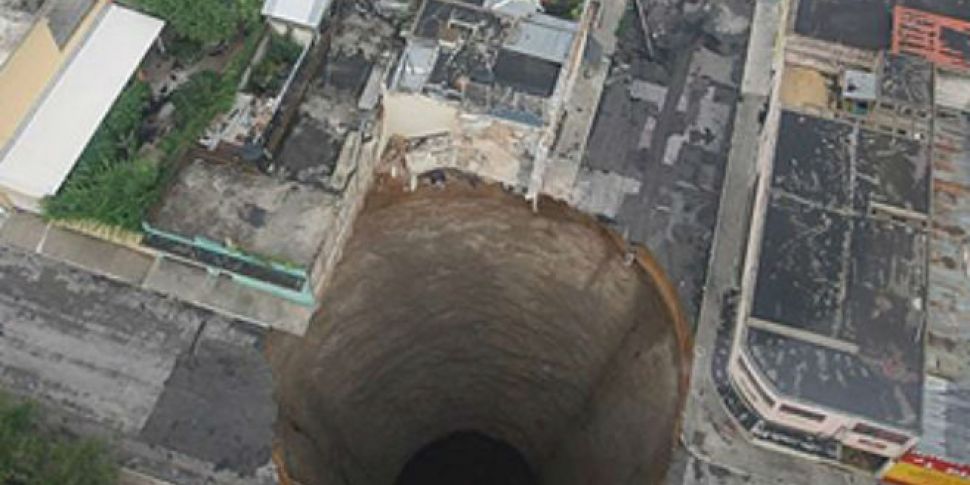Depressions which appeared in Sruwaddocan Estuary in North Co. Mayo this week may have raised new concerns that Ireland is at risk to sinkholes, a phenomenon that has made headlines around the world in recent years.
In 2010, a tropical storm in Guatemala caused a 30-storey deep sinkhole to swallow a three storey building and a house, killing at least one person. Earlier this year, Floridian Jeff Bush disappeared when a sinkhole suddenly consumed his bedroom.
Advertisement
However, the depressions found in Co. Mayo are actually man made, caused by the construction of the Corrib gas line, and according to Mayo County Council do not pose dangers to the public.
Terence Conway, spokesperson for Shell to Sea, a group campaigning against the pipeline, filmed this video at the Co.Mayo strand:
Elsewhere in Ireland, sinkholes, or dolines as they're more commonly referred to outside North America, are frequent, with minor collapses happening in roads and fields where limestone is found beneath the ground, otherwise known as karst areas. Limestone can be dissolved by water, which is why dolines sometimes occur.
There are estimated to be more than 6,000 dolines in Ireland's karst areas: West of the Shannon including East Galway and Mayo, the Burren, Fermanagh, Cavan, Kilkenny, Cork and Kerry.
A rescue operation of a cow trapped at the bottom of a doline which opened beneath her in North Cork

A doline in Co. Roscommon

Dr. Caoimhe Hickey, a hydrogeologist for the Geological Survey of Ireland (GSI), says that most dolines are very small and that landowners know how to react when they appear.
"You might get a small opening that would open up overnight, but it would literally be a few centimetres across. It's generally in areas that are actively sinking all the time. In those areas farmers or landowners will be filling them in all the time."
For more information on dolines, see the GSI website.









